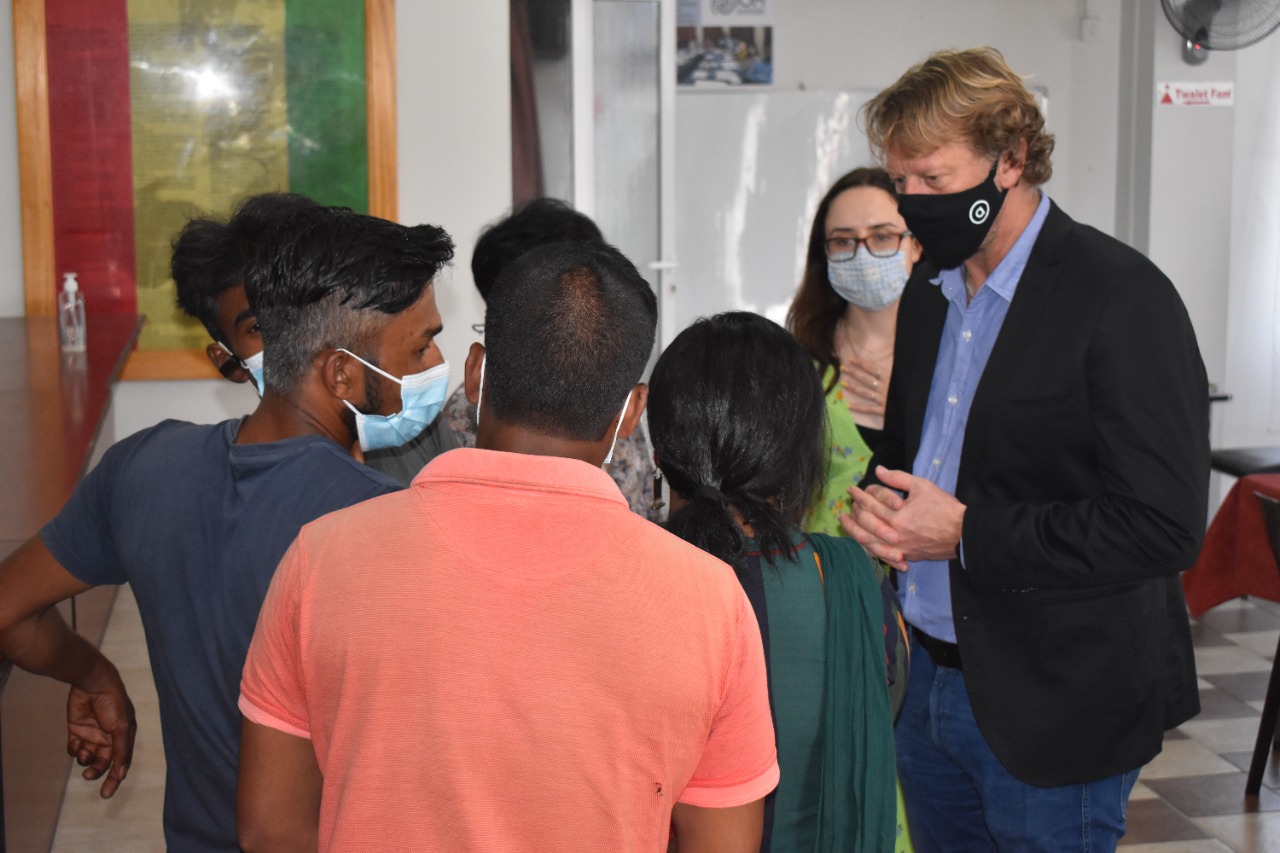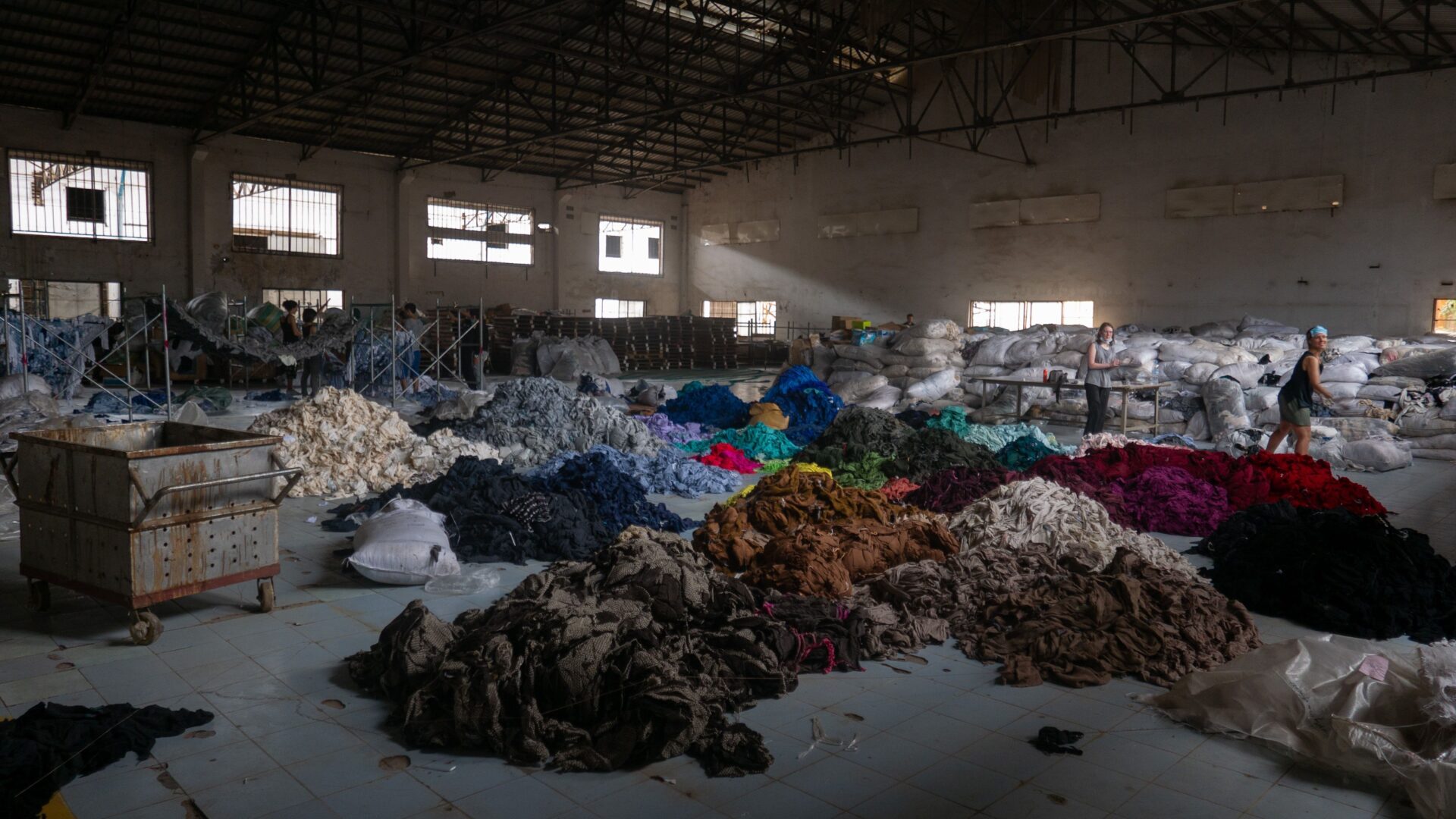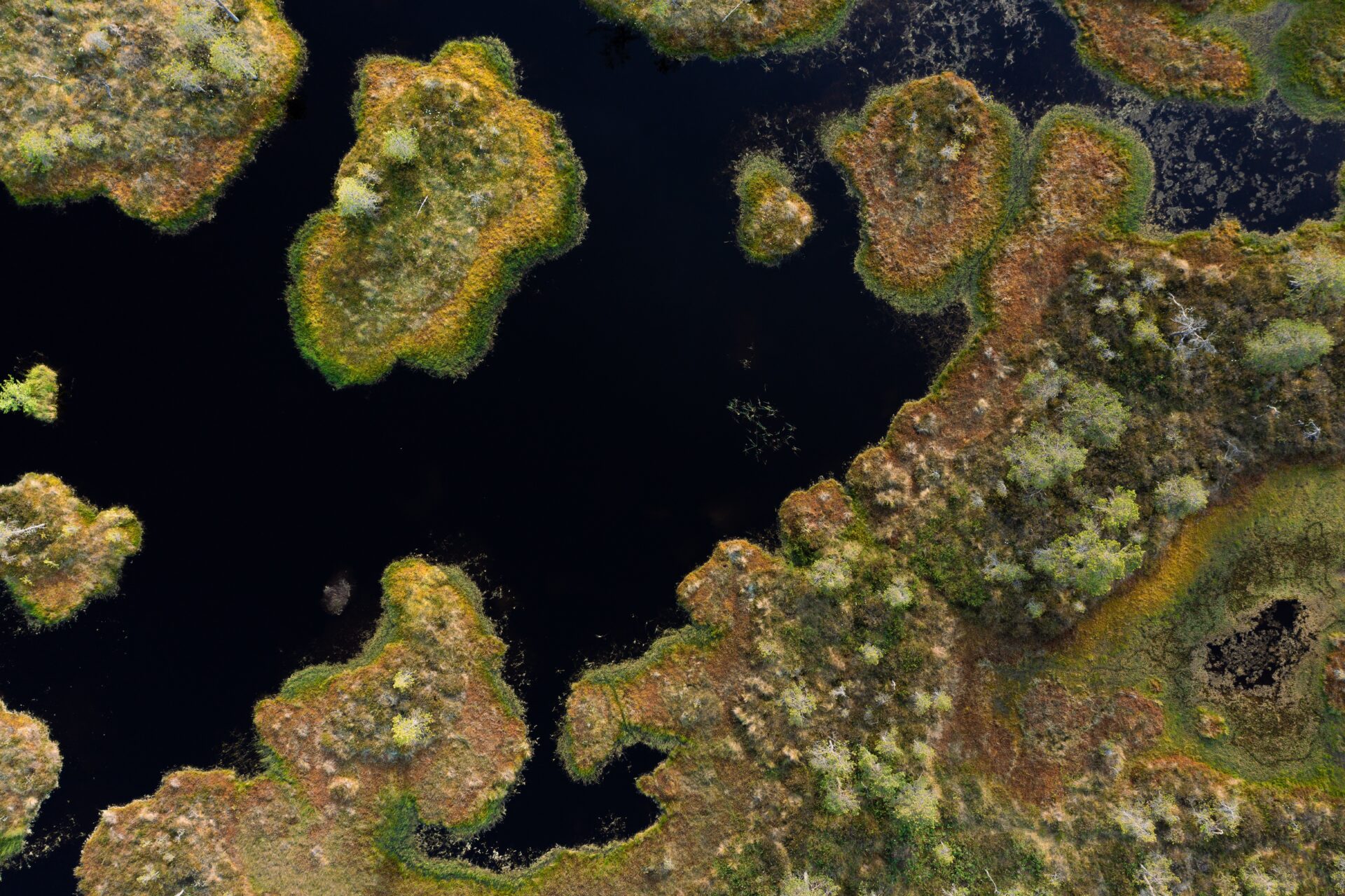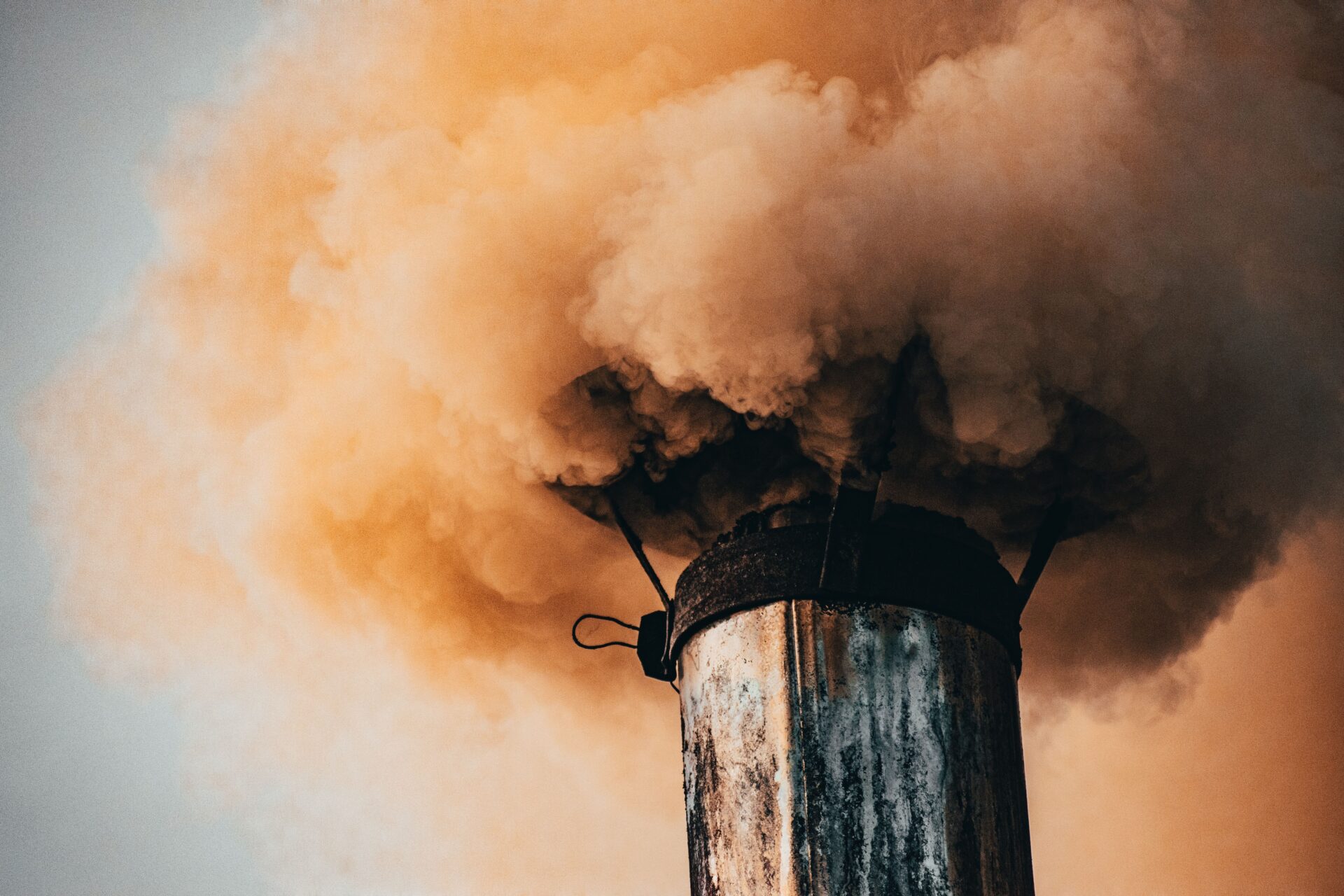Target Corporation drives Efficiencies across Fashion’s Supply Chain
Planet Earth is rich in natural resources. Human demand, however, is rapidly outgrowing natural supply. Good stewardship of natural resources is essential to protect the planet and the wellbeing of future generations. Fashion is a multi-trillion-dollar industry that contributes up to four per cent of global CO2 emissions annually. According to the IPCC, continued trajected emission growth will bring rise to global temperatures, extreme weathers and subsequent consequences for people, business, and our planet.
While there is a lack of complete data for greenhouse gas emissions, there is little doubt that fashion is among the biggest GHG emitters, and that there is an urgent need for action to reduce the carbon footprint of the industry. If it proceeds on the current trajectory, the industry will fall short of the decarbonisation targets required to conform with the 1.5-degree pathway. Achieving resource stewardship will depend on coordinated, multi-stakeholder action to reduce GHG emissions and decisive innovation.
Increasingly, fashion companies recognise the magnitude of the challenge. Many players have set science-based targets aligned with the 1.5-degree pathway. An aligned industry direction is required to take advantage of further decarbonisation opportunities.
Apparel Impact Institute Clean By Design Programme
Apparel Impact Institute (Aii) currently heads supply chain efficiency efforts within the apparel industry, scaling improvement programmes across key areas of known impact in textile production: Energy, Water, Chemistry & Wastewater and Materials in partnership with leading brands and wider stakeholder groups. Apparel Impact Institute’s principal programme Clean by Design, originally created by the Natural Resources Defense Council and first initiated in 2011, works to identify, fund, scale and measure stepwise solutions for reducing the environmental impacts of textile manufacturing.
Since the programme’s inception in 2011, the programme has been deployed across 295 facilities in 8 regions globally with 27 brands in active programming. The programme provides brands with a comprehensive system for improving energy, water, and chemical use in wet processing textile mills over a 13-month period. It allows them to establish best practices and procedures for improving inputs, reducing chemical use, conducting careful oversight and operations of wastewater treatment, and enabling recovery and reuse of chemicals whenever possible.
Clean by Design focuses on a set of 10 best practices that deliver an almost immediate return on investment – most projects pay for themselves in less than one year – while reducing energy use by 10% and 20% less water waste on average.
Target Corporation – Scaling supply chain efficiency
As a founding member of the Apparel Impact Institute (Aii), Target Corporation stands out as one of the leading brands committed to sustainability in the apparel industry. For Target Corporation, Clean by Design has played a critical role in achieving its sustainability goals providing systemic solutions for reducing environmental impact across its manufacturing. In 2020 alone, 30 of Target’s suppliers on average achieved a 20% water saving and 12% GHG reduction. These suppliers also received regular training on local requirements for best production practices as well as benefitted from peer learning workshops encouraging shared learning between mills on tackling environmental challenges and possible solutions.
Through Clean by Design, Target Corporation and others enrolled on the programme are realising the vital importance of collaboration and how one company’s actions can have a positive ripple effect on the broader industry – where one company’s investment in solutions, creates positive sustainability results for others. As one of the largest U.S. retailers, go forward, Target Corporation seeks to lead and use its scale and scope to drive large-scale change through greater investment and broader industry collaboration.
Read more Case studies
BESTSELLER Participates in GFA’s Circular Fashion Partnership in Bangladesh
In order to successfully implement effective waste stream structures across their supply chain, and ensure circular value is captured in manufacturing countries, BESTSELLER joined GFA’s Circular Fashion Partnership in Bangladesh.
The potential of the fashion industry to drive change
According to BSR, the global garment industry employs an estimated 70 million people throughout its value chain. They are the backbone of the industry. Solely acknowledging the environmental degradation associated with many fashion industry practices is not enough if we fail to also address the social issues so closely linked to the industry. Sustainability must be understood in all its nuance.
The fashion industry has the power to drive positive social and economic development for these people, their families, and their communities by upholding human rights, creating secure working conditions, paying fair wages, and promoting wellbeing. Not only are better practices an ethical imperative, but the industry is now faced with a new generation of consumers, with higher expectations and demands like never before.
While these goals are inherently valuable and should be pursued for their own sake, they can also bring numerous benefits for fashion companies, such as higher productivity, employee retention and value chain resilience.
Forged alliances between fashion brands and NGOs increasingly play an important role in accelerating work towards worker protections and the improvement of working conditions.
ASOS Collaborates to Launch Migrant Resource Centre
On a mission to eradicate modern slavery amongst migrant workers in garment manufacturing, online retailer; ASOS, is working together with key stakeholders in Mauritius to ensure the rights of migrant workers are protected.
Mauritius has been a focus of the ASOS Ethical Trade programme since 2016, when ASOS discovered that migrant workers in its supply chain were subject to debt bondage and other issues indicative of modern slavery. On the back of this, ASOS worked to implement the employer pays principle and collaborate to drive systemic, long-term change. The company submitted a funding proposal to the UK Home Office’s Modern Slavery Innovation Fund with Anti-Slavery International and IndustriALL Global Union. As a result of this funding, in 2019, ASOS and IndustriALL Global Union supported the establishment of the Migrant Resource Centre (MRC) in Mauritius alongside collaborators Anti-Slavery International and Confédération des Travailleurs des Secteurs Publique et Privé.
Between April 2020, when the MRC registered its first case, and early April 2022, the MRC recorded 113 grievances affecting over 2,100 workers. 64% of these grievances are now resolved, and 10% partially resolved. Within this same timeframe, the MRC also recorded 23 requests for information, affecting 913 workers. Most common grievances include wage theft; contractual issues; inadequate living conditions; insufficient food; confiscation and retention of documents; deception about employment conditions; threats and intimidation. The MRC has also collaborated with the International Organisation for Migration for the development of Standard Operating Procedures to fight human trafficking and the High Commission of Bangladesh in Mauritius to provide support on specific cases.
The centre, which formally opened this year, supports migrant workers individually and collectively by providing information and advice, facilitating remedy and providing a safe space to interact freely and openly with each other. To further address risk of exploitation, an independent channel has been established for migrant workers to report workplace violations that may otherwise go unresolved. Beyond grievance resolution, the MRC has also helped to increase knowledge among migrant workers on their rights through monthly awareness raising sessions.
A blueprint for the industry
The collaboration that emerged under the UK Home Office’s Modern Slavery Innovation Fund is the first time a brand, NGO and trade union has worked together in this way and provides a case study that can be applied to other migration corridors and sourcing regions. It is one of the only mechanisms in Mauritius with the capacity and leverage to challenge power imbalances between migrant workers and their employers, which is fundamental when addressing systemic exploitation. The data and information gathered by the MRC is fundamental in helping inform key stakeholders about the issues faced by migrant workers. It plays a key role in reducing the risk of exploitation and helping coordinate these stakeholders to reduce modern slavery risks associated with the use of migrant labour in Mauritius, ensuring workers are protected and respected.
Learn more in ASOS’ latest Modern Slavery Statement here.
Looking ahead
Going forward, fashion brands must continue to collaborate with their manufacturing partners and participate in convening with an alliance of actors to improve the work environments for people employed throughout the fashion value cycle.

Read more Case studies
BESTSELLER Participates in GFA’s Circular Fashion Partnership in Bangladesh
In order to successfully implement effective waste stream structures across their supply chain, and ensure circular value is captured in manufacturing countries, BESTSELLER joined GFA’s Circular Fashion Partnership in Bangladesh.
BESTSELLER Participates in GFA’s Circular Fashion Partnership in Bangladesh
The Circular Fashion Partnership
The Circular Fashion Partnership (CFP) is a global initiative to spur local action in textile manufacturing countries to accelerate and scale recycling of post-industrial textile waste – an effort to achieve a long-term, scalable, and just transition to a circular fashion industry.
The project facilitates circular commercial collaborations between global fashion brands, manufacturers and recyclers to enable and incentivise segregation and digital tracing of post-industrial textile waste to recycling solutions. The first CFP was initiated in 2020 in Bangladesh by Global Fashion Agenda, together with the Bangladesh Garment Manufacturers and Exporters Association (BGMEA) and waste traceability platform Reverse Resources with support from Partnership for Green Growth (P4G).
Being able to identify and digitally trace post-industrial textile waste streams, is critical to being able to unlock the opportunities of circular business models within manufacturing countries. There’s a significant demand from global fashion brands for recycled textiles, yet a very limited supply. Manufacturing countries such as Bangladesh have large quantities of consistent and high-quality textile waste streams that form perfect feedstock for textile recyclers. Through Reverse Resources platform, the CFP was able to track over 1500 tonnes of textile waste to suitable recycling solutions. Furthermore, several brand participants were able to go one step further and present the journey of their products made with recycled materials all the way to their end users.
By tracing and presenting textile waste streams, the CFP is not just matching feedstock supply of recycled materials with global brand demand, but also presenting opportunities at scale to increase awareness and create a conducive environment for circularity. In the case of Bangladesh, Reverse Resources estimated it could reduce its virgin cotton imports by 15% and save 750 million USD a year, by recycling its 100% cotton offcuts domestically.
BESTSELLER: Going Circular in Bangladesh
In order to successfully implement effective waste stream structures across their supply chain, and ensure circular value is captured in manufacturing countries, BESTSELLER joined GFA’s Circular Fashion Partnership in Bangladesh. BESTSELLER recognised that textile waste is most often shipped back and forth in the process of becoming new recycled yarn and fabrics. In order to avoid just another negative environmental impact, BESTSELLER’s ambitious sustainability platform Fashion FWD Lab is piloted two different circularity projects in Bangladesh.
As part of the CFP, BESTSELLER onboarded three of its suppliers: Yasin Knittex Industries LTD., AKM Knit Wear Ltd. and GMS Composite Knitting Ind. Limited, who worked with Reverse Resources to set up textile waste segregation and digitally trace 153,9 tonnes 100% cotton waste to recycling solutions, such as Bangladeshi mechanical recycler CYCLO. By locally securing this high-quality feedstock and through continuous dialog and collaboration to match recycled material characteristics with suitable product specifications, BESTSELLER has incorporated CYCLO’s recycled cotton into 64,000 new garments.
CYCLO doesn’t use water, chemical or dyes in its process resulting in greater estimated environmental savings in comparison to conventional died cotton. According to the Life Cycle Assessment of a 70%recycled cotton-30%rPET mechanically recycled yarn by Cyclo: 1kg of recycled yarns saves 7.5kg of CO2 and 2,626 litres of water. BESTSELLER furthermore developed supportive communications to present its circular value cycle partners and the journey behind its recycled materials to end-users and engage them in further closing the loop.
Read more Case studies
The need for investment
The latest IPPC Report found that financial flows are between three and six times lower than levels needed by 2030 to limit warming to below 2°C. Despite this, IPCC Working Group III Co-Chair Priyadarshi Shukla said: “Without taking into account the economic benefits of reduced adaptation costs or avoided climate impacts, global Gross Domestic Product (GDP) would be just a few percentage points lower in 2050 if we take the actions necessary to limit warming to 2°C or below, compared to maintaining current policies,” said Shukla. Accordingly, to close investment gaps we need clear signalling from governments and the international community, including a stronger alignment of public sector finance and policy.
Funding fashion’s progress
The GFA Monitor platforms the need to transition production to renewable electricity across the fashion value cycle. However, the substitution of fossil fuels with renewable alternatives and the increase of energy efficiency still face a common challenge: financing.
It is crucial that the fashion industry works to close these investment gaps and accelerate investment in renewable energy sources and energy efficiency. One organisation pioneering the way in this area is H&M Group.
Sustainability linked bond
The bond proceeds will be used to finance initiatives that deliver progress against key materials and emissions targets and it is paired with a number of ambitions: increase the share of recycled materials used to 30%, reduce emissions from the Group’s own operations by 20% and reduce absolute Scope 3 emissions from fabric production, garment manufacturing, raw materials and upstream transport by 10% by 2025. Following the launch, the bond attracted significant attention on the market and was 7.6 times oversubscribed within a week. This is indicative of sustainable sentiment across the financial industry.
On a mission to eliminate coal in fashion’s supply chain
To ensure the necessary emission reductions are achieved, as of January 1, 2022, H&M Group will no longer onboard new suppliers or supplier factories with on-site coal boilers in their factories into its supply chain.
Exclusively focused on financially supporting projects to reduce H&M Group’s emissions, a Green Investment Team has been established. Utilising its Climate Positive Roadmap tool, the team can forecast future emissions scenarios for its full value chain and calculate the levers for greatest impact reduction, in order to prioritise where to invest.
To speed up the transition away from fossil fuels H&M group are offering financial support to suppliers, aiming to reduce investment costs by 50%. Currently three approved projects in India are forecasted to reduce a total of 80,000 tonnes of greenhouse gases annually, using for example solar thermal technology. Out of this reduction, H&M Group can only claim 15,000 tonnes per year corresponding with the share of H&M Group’s production. This highlights the need for an update of today’s carbon accounting frameworks.
H&M Group
Committed to reducing emissions, H&M Group has set an ambitious reduction target of 56% by 2030 and Net-Zero by 2040. To stimulate this transition, H&M Group issued a €500 million sustainability linked bond in early 2021, established a dedicated climate impact budget, and set up a Green Investment Team. With this, H&M Group are already investing in renewable energy and energy efficiency together with their suppliers.

Read more Case studies
BESTSELLER Participates in GFA’s Circular Fashion Partnership in Bangladesh
In order to successfully implement effective waste stream structures across their supply chain, and ensure circular value is captured in manufacturing countries, BESTSELLER joined GFA’s Circular Fashion Partnership in Bangladesh.
Global Fashion Group Explores Carbon Offsetting
Planet Earth is rich in natural resources. Human demand, however, is rapidly outgrowing natural supply. Good stewardship of natural resources is essential to protect the planet and the wellbeing of future generations. According to the IPCC, continued trajected emission growth will bring rise to global temperatures, extreme weathers and subsequent consequences for people, business, and our planet.
Fashion is a multi-trillion-dollar industry that contributes up to four per cent of global CO2 emissions annually. Our Fashion on Climate report outlines that if the industry proceeds on the current trajectory, it will fall short of the decarbonisation targets required to conform with the 1.5-degree pathway.
Increasingly, fashion companies recognise the magnitude of the challenge. Many players have set science-based targets aligned with the 1.5-degree pathway. An aligned industry direction is required to take advantage of further decarbonisation opportunities.
Global Fashion Group’s sustainability agenda
Global Fashion Group (GFG) is dedicated to transforming the ways in which it works in a bid to reduce its carbon intensity. GFG have long-term commitments to Science Based Targets and are working towards commitments related to sustainable materials, renewable energy and low emissions transport.
Carbon offsetting
Concurrent with this, since 2020, GFG has maintained carbon neutrality across its own operations (Scope 1 & 2) and customer deliveries (Scope 3) through a robust carbon offsetting portfolio. While GFG recognises that offsetting is not the primary tool to fundamentally address the climate crisis, its commitment to carbon neutrality allows it to support climate positive actions outside of the business, while creating an important impetus for change internally.
Through the purchasing of verifiable carbon credits originating from certified renewable energy projects, 186,492 tonnes of verified CO2 emission reductions have been offset over two years. These projects have supported the development of low carbon energy solutions in emerging markets – Brazil, China and India. All Global Fashion Group’s carbon projects are certified under international offset standards recognised by the International Carbon Reduction and Offset Alliance, meaning in addition to their carbon benefits, these projects generate social benefits to the local communities, For example one project created 960 jobs, 25% of which were held by women.
The framework
To aid responsible offsetting best practice, GFG has also developed an open source 6-part assessment framework supporting offset purchasing:
- Type of project(s): The type of carbon credit project(s) and the activities undertaken (e.g. renewable energy projects, reforestation, small hydro projects etc) and their alignment with the company’s objectives
- Geographical alignment with GFG: Alignment between the location(s) of the offset projects: e.g. in GFG’s operating regions or where our suppliers are located;
- Certified Projects: Extent to which the offset projects are certified by international recognised standards such as Certified Emission Reduction (CER), Verified Carbon Standard (VCS) and Gold Standard (GS) which are approved offset standards by International Carbon Reduction and Offset Alliance (ICROA);
- Verified co-benefits: Whether the project generates additional socio-economic benefits (e.g. job creation, better healthcare) and whether these are verified;
- Offering Renewable Energy Certificate (REC): Whether the provider can offer RECs in conjunction with the carbon credit(s), which also enables GFG to reach its renewable energy goals; and
- Cost of offset: Price per tonne of the carbon credit.
Read more Case studies
BESTSELLER Participates in GFA’s Circular Fashion Partnership in Bangladesh
In order to successfully implement effective waste stream structures across their supply chain, and ensure circular value is captured in manufacturing countries, BESTSELLER joined GFA’s Circular Fashion Partnership in Bangladesh.
Kering Champions Regenerative Agriculture
Each and every ecosystem is paramount to supporting our planet and the life that occupies it. Without it we risk losing the very components that ensure our existence, such as water, food and essential resources that we utilise every day.
Soil is a fundamental element of the ecosystem, playing a central role to natural sequestration, food and fibre production. The apparel producing industry has long been practicing exploitative forms of agriculture and is currently built on an extractive model. Overgrazing, land conversion, the use of chemicals, deforestation, and the extraction of non-renewable materials based on fossil fuels have led to unintended consequences threatening soil health, biodiversity and livelihoods. Moreover, soil degradation and forest destruction has also contributed to declining water availability and quality, increased risks of flooding, and dangerous changes in weather patterns.
Regenerative agriculture
To avoid catastrophic consequences for planetary resources and increase its long-term resilience, the fashion industry should adopt a regenerative, nature-positive land stewardship approach. To align the production of plant-based fibres with the 1.5-degree pathway, the textile industry must move to a new production model based on restoration, regeneration, and recycling that puts nature at its centre.
According to a recent report from Textile Exchange, regenerative agriculture holds great potential to mitigate fundamental climate-related risks to the fashion industry through a multitude of co-benefits, including improving soil fertility and soil carbon, reducing the need for chemicals, ensuring resilience to extreme weather, increasing crop yield potential, driving disease resistance, improving water and air quality, and more.
Crucially, endeavours towards regenerative agricultural practices must prioritise justice and equity, honouring Indigenous farming practices and recognise the impact of agriculture on land beyond the boundaries of farms. Investment in regenerative agriculture projects should be approached as an investment in a fundamentally different system, not a variation on the current extractive model.
Kering’s Regenerative Fund for Nature
To help reach its commitment to attain a net positive impact on biodiversity by 2025, Kering and Conservation International publicly launched the Regenerative Fund for Nature. By 2025, the Fund has the ambitious target of bringing 1,000,000 hectares of farms and rangelands in Kering’s sourcing landscapes under regenerative agricultural practices.
So far, the Fund, has drawn on best-in-class science to adopt a very clear definition of regenerative agriculture, which revolves around 5 key principles: improving soil health, enhancing biodiversity, reducing the use of harmful inputs, improving livelihoods and ensuring animal welfare. The selected projects have all built context-appropriate KPIs which correspond to these principles, and will rigorously track progress against validated monitoring & evaluation plans. In order to ensure ‘regenerative agriculture’ delivers its promised outcomes, it is critical for the fashion industry to take a rigorous approach to project implementation, and use a combination of both process-based as well as outcome-based KPIs.
Areas of Focus
Together with Conservation International, Kering optimised a scientific mapping process to identify focal countries in which to focus its activities ensuring the selected landscapes were representative of critically important biomes and ecosystems, also presenting high potential for regeneration. Collectively, this first cohort of grantees are working to regenerate approximately 840,000 hectares of land, with an anticipated positive impact on 60,000 beneficiaries.
The Fund was publicly launched in early 2021, with the first round of grantees announced during the IUCN World Conservation Congress in Marseille later in 2021. The selected projects include:
- A sheep leather project in Southwestern France
- A cattle leather project in the Chaco region of Argentina
- A goat grazing project across 3 Spanish regions
- A cashmere grazing project in Mongolia’s Khangai Mountains and South Gobi region
- A cotton project working across 5 states in India
- A wool project in the Eastern Cape Province of South Africa
- A wool project in the Patagonia region of Argentina
Next Steps
Activities are currently underway, with grantees not only ramping up fieldwork, but also taking baseline measurements to monitor progress over the course of the Fund. To encourage the exchange of best practices, The Regenerative Fund for Nature Learning Exchange encourages grantees to share experiences and learnings with each other and external experts. Establishing and scaling this ‘community of practice’ provides a valuable way to effectively scale regenerative agriculture across the industry.
Read more Case studies
BESTSELLER Participates in GFA’s Circular Fashion Partnership in Bangladesh
In order to successfully implement effective waste stream structures across their supply chain, and ensure circular value is captured in manufacturing countries, BESTSELLER joined GFA’s Circular Fashion Partnership in Bangladesh.
PVH Corp. on designing for a circular economy
Designing products for a circular economy is central in the transition to building a truly circular system – one where products are used more, are made to be made again and are made from safe and recycled or renewable inputs.
To demonstrate this, in 2019, Ellen MacArthur Foundation launched The Jeans Redesign which acts as a framework to inform companies across the industry to start designing with circular economy principles, and to work collaboratively and learn from each other. The guidelines, created with input from industry experts, set a minimum bar for the creation of jeans, including guidance on recycled content, safe chemistry, material sourcing, and recyclability.
During the first two years of The Jeans Redesign, participants have demonstrated that it is possible to make jeans fit for a circular economy today, and has resulted in brands putting half a million pairs of jeans on the market that are durable, traceable, recyclable, and made using safe materials and processes.
TOMMY HILFIGER X The Jeans Redesign
Driving fashion forward for good is PVH Corp.’s ambition to ensure all owned products and business operations generate zero waste, zero carbon emissions and zero hazardous chemicals, and for all products to be designed for a circular economy. To achieve this vision, in 2019, TOMMY HILFIGER, a PVH Corp. brand, joined the Ellen MacArthur Foundation’s project The Jeans Redesign. By joining this project, they committed to designing and making jeans for a circular economy.
In 2021, TOMMY HILFIGER successfully launched its first Jean Redesign collection of twenty garments in-line with the Jeans Redesign guidelines. The collection prompted a full rethink across design and manufacturing processes, founded upon principles of durability, recyclability, traceability, and material health. Within the collection, design considerations included the use of detachable buttons; the replacement of metal rivets with bar tacks; the removal of all metal zippers; removal of the leather patch; the use of 100% organic fabric. To increase durability of the products, each piece of the collection also features wash and care instructions on the pockets, along with advice to repair, donate, or recycle the product after use.
To date, the Jeans Redesign collection highlights TOMMY HILFIGER’s ongoing commitment to eliminate waste by innovating for circularity. So far, TOMMY HILFIGER has trained nearly 70% of its designers on circular design principles. The brand is also driving transformative change in the denim industry, producing more than 4 million pieces of lower impact denim, finished through processes that use less water or energy than traditional processes, as well as becoming the first major company in the denim market to use 100% recycled cotton at scale (80% pre-consumer waste, 20% post-consumer waste).
Industry progress to date
So far, 100 organisations (including brands, garment manufacturers, and fabric mills) having enrolled on The Jeans Redesign and are working together on a learning journey to demonstrate circular design in action. By signing up to the project they have committed to bring a selection of redesigned jeans to the market, and are required to transparently report on the progress they made at the end of the period.
While the number of circular jeans makes up just a small part of the total market, the project offers companies a valuable testing bed for innovation and identifying changes to processes. The insights gained can go a long way in informing bold action towards creating more products, across their portfolios, in line with circular economy principles. In particular, the first two years of the project have highlighted barriers to scale and areas for action that the industry must address to scale the circular economy and tackle the root cause of global challenges such as climate change, biodiversity loss, waste and pollution.
Scaling the adoption of circular economy principles
Building on the momentum driven by The Jeans Redesign, businesses in the fashion industry are encouraged to take bold action to adopt circular economy principles today. In order to create the necessary enabling environment fit to scale, the below actions are required:
- Collaboration and innovation across all businesses – including sorters and recyclers – to overcome innovation gaps and barriers to scaling.
- Alignment across businesses and policymakers on the definitions and parameters for regenerative production and sourcing, putting in place enabling mechanisms to support the production of materials that have nature-positive outcomes.
- Creation of the enabling conditions for the circular economy to emerge at scale in the fashion industry, building on a set of common policy goals.
Read more Case studies
BESTSELLER Participates in GFA’s Circular Fashion Partnership in Bangladesh
In order to successfully implement effective waste stream structures across their supply chain, and ensure circular value is captured in manufacturing countries, BESTSELLER joined GFA’s Circular Fashion Partnership in Bangladesh.
Nike’s Pursuit of a Zero Carbon and Zero Waste Future through Circular Design
Circular fashion systems
A circular fashion system reimagines the conventional ‘take, make, dispose’ fashion model which is characterised by excessive overproduction, underutilisation, and poor disposal. The linear model is not only harmful for the environment but also destroys value.
According to the Ellen MacArthur Foundation, while clothing production doubled between 2000 and 2015, utilisation decreased by 36 per cent during the same period.Today, fashion brands are increasingly exploring circular business models. The industry must move to a circular model which is characterised by three principles, as outlined by the Ellen MacArthur Foundation: Eliminating waste and pollution, circulating products and materials and regenerating nature.
Athletic apparel company; Nike embraces a clear vision of the future: zero carbon and zero waste. Ambitious targets and tangible actions are bringing this vision to life and circular design and circular business models are central to achieving this. Nike is focused upon creating a circular future through innovation and collaboration, based on bold, science-based targets. Through this Nike engages actors along the value cycle and customers alike.
Envisioning a circular future
Nike’s vision of circularity calls for regenerative systems where waste is the source for new materials and virgin materials are no longer needed. Already, Nike product teams have adopted circular design principles as a creative accelerant to reinvent apparel and footwear design. Looking beyond product design, Nike are also reimagining every aspect of its business — how a product is sourced, made, used, returned, reused and ultimately revived as something new—through a circularity lens.
Designing For Circularity
Teams and suppliers across Nike are re-thinking materials, which are responsible for 70% of its carbon footprint, and proving that performance gear, like the Mercurial Next Nature, can be made with recycled materials. Insights gathered are used to quickly scale use of recycled materials throughout product lines. For example, in FY21, Nike apparel and footwear increased use of recycled polyester to 38%.
Moreover, more efficient patterning and molds are used at Nike in order to design out waste before a product even hits the shelf. In FY21, this effort led to a 30% reduction in midsole defect waste, preventing more than 2.4 million kg of waste and 9.4 million kg of carbon emissions. Furthermore, across manufacturing, teams are collaborating with suppliers to create new methods for sorting, processing and recycling manufacturing waste. In FY21, 99.7% of waste from Nike’s strategic finished goods suppliers was diverted from landfill of which included diverting 100% of the waste from footwear manufacturing.
Nike’s take-back programmes and pilots
Around the world, Nike is scaling circular business innovations and piloting new programmes that help extend the life of footwear and apparel before recycling it for a new start.
As just one example, since 1992, Nike has been recycling manufacturing scrap and end-of-life footwear into ‘Nike Grind’. Nike Grind material is used to form new Nike products such as soles and outsoles as well as playgrounds, running tracks .
Supplier Collaboration
The GFA Monitor outlines how crucial it is to ensure a just transition from linear to circular practices for all actors in the fashion value cycle, with specific attention paid towards marginalised and disenfranchised groups.
Over 90% of Nike footwear and branded apparel is made by factory groups that Nike has worked with for over 15 years. These long-term relationships are a firm foundation for collaborating and innovating to build a circular future and improve supplier practices. Already, through these partnerships, suppliers have embraced new standards for recycling and routinely create fresh approaches to solve recycling challenges.
Going forward
There are many challenges to designing for circularity and building strong take-back services and a circular economy. But Nike is committed and sees innovation, testing, learning, sharing and scaling to break down the barriers of today as well as those that lie ahead as its role and responsibility. These tenacious actions, backed by science-based targets, and accelerated pace are getting Nike closer to achieving its 2025 Impact goals and creating a better future where the planet and people thrive.

Read more Case studies
BESTSELLER Participates in GFA’s Circular Fashion Partnership in Bangladesh
In order to successfully implement effective waste stream structures across their supply chain, and ensure circular value is captured in manufacturing countries, BESTSELLER joined GFA’s Circular Fashion Partnership in Bangladesh.
Textile Exchange Guiding the Industry on Responsible Sourcing
The sourcing and production of fibres and materials used by the fashion industry puts substantial pressure on natural resources and comes with implications for water, energy, and land use, as well as emissions and waste. At least two thirds of a brand’s environmental footprint can be attributed to its choice of raw materials. As a result, choosing and using the right fibres and materials, as well as production practices, is key to limiting the far-ranging implications for the biosphere.
The conduct of the fashion industry does not only affect ecosystems, but also brings risks for farmers working in fields and workers in factories. It is decision makers, designers, and product developers at major brands who are uniquely positioned to make these changes happen.
Textile Exchange 2030 Strategy: Climate+
Global non-profit organisation, Textile Exchange works holistically with the fashion and textile industry to guide brands, manufacturers, and farmers towards more responsible production and sourcing of fibres and materials across fashion’s value chain. In line with Textile Exchange’s Climate+ strategy and to align the industry on the 1.5 degree pathway by 2030, CO2 emitted during textile fibre and material production will have to be reduced by at least 45 per cent by 2030, compared to a 2019 baseline – achieved through the accelerated adoption of practices that improve the state of our water, soil health, and biodiversity.
The Preferred Fiber and Materials Matrix
To enable more responsible sourcing decisions, in 2020, Textile Exchange adopted the Preferred Fiber Toolkit; a tool previously developed by Gap Inc. to support their design and product teams in understanding the impacts of fibre and material choices.
On a mission to take this tool forward for industry-wide adoption, Textile Exchange, together with Gap Inc. and the Sustainable Apparel Coalition have transformed the tool into a decision-making matrix – Preferred Fiber and Materials Matrix (PFMM) – informing the industry on more responsible sourcing decisions backed by guidance and trusted, quantitative and qualitative data sources.
Currently, the tool assesses over 65 programmes and materials through a robust methodology that considers 6+ indicator themes: climate and greenhouse gas emissions, water use and pollution, chemicals and toxicity, soil health and land management, human rights, waste, and animal welfare. The transparency of the assessment criteria provides nuanced context, giving brands the ability to make comparisons within material types to inform sourcing decisions.
Through adopting the PFMM, Gap Inc. has focused efforts on priority materials to address critical impact areas, developing a directional path towards sourcing that allows for flexibility and continual improvement. Furthermore, the PFMM has supported Gap Inc.’s product teams on how to meet sustainability goals on materials including their ambitious target to source 100% more sustainable cotton by 2025.
Collaboration and Co-creation
The collaborative development of the PFMM enabled Textile Exchange, Sustainable Apparel Coalition and Gap Inc. to successfully land on how the industry can assess and identify preferred fibre and materials through allowing necessary testing and consultation. Today, the resulting tool uses programme documentation, quantitative and qualitative research, and data quality considerations. In this way, it enables brands to consider a more holistic set of impacts.
The outcome of the PFMM assessment methodology is identifying preferred materials on a spectrum from baseline to transformational. Baselining with materials which align to business as usual (typically conventional materials), the matrix identifies stages of improvement from minimising harmful impacts, to maximising positive effects, and ultimately the pinnacle of regenerative and circular production systems.
By using the PFM Matrix to source more preferred materials, brands can swap siloed solutions and go beyond simply considering greenhouse gas emissions to looking at a portfolio of interconnected issues that will ultimately feed into their sustainability targets.
From 2022, the PFMM will become publicly available and act as a key leveraging tool for the industry in driving towards a 45% emission reduction in fibre and raw material production by the end of the decade. To find out more about the PFMM visit their site.
Read more Case studies
BESTSELLER Participates in GFA’s Circular Fashion Partnership in Bangladesh
In order to successfully implement effective waste stream structures across their supply chain, and ensure circular value is captured in manufacturing countries, BESTSELLER joined GFA’s Circular Fashion Partnership in Bangladesh.
Fair Labor Association Drives Forward Fair Compensation and Living Wage for All
The current wages in most garment producing countries are far below what workers need to reach a decent standard of living. While many brands are making strides to promote fair wages throughout their value chains, progress to date remains slow in many areas. One of the structural barriers to progress is the fact that fashion brands usually do not directly control the wages of workers but depend on their supply chain partners to effect change.
Moreover, existing labor-intensive methods for measuring wages, coupled with a lack of clarity on the methodology and definition of living wage benchmarks, has resulted in a lack of real wage data collection necessary to improving workers’ wages.
The issue must be addressed by the industry-wide implementation of wages that meet the basic needs of workers. Fashion brands can make a difference by working with their partners to promote fair compensation and better wage systems underpinned by responsible purchasing practices that will help end poverty for millions of garment workers globally.
Fair Labor Association
Non-profit collaborative, Fair Labor Association (FLA) works together with an international network of companies, universities, and civil society organisations collaborating to ensure that people working in global supply chains are paid fairly and their health, safety, and well-being are protected. To date, 51 global fashion brands have committed to ensuring fair labour practices in their value chains as participating FLA members.
FLA strives to support industries in achieving ’fair compensation’ defined as – a worker’s right to compensation within a regular working week that is sufficient to meet their basic needs and have some discretionary income, whereby employers shall pay at least the minimum wage or the appropriate prevailing wage, whichever is higher, comply with all legal requirements on wages, and provide any benefits required by law or contract.
As part of the FLA’s 2020 Fair Compensation Strategy, apparel and footwear members are required to use FLA living wage tools to measure the wage gap in their own supply chains. To support FLA companies, FLA developed the Fair Compensation Toolkit which allows companies to collect wage data, identify wage gaps, and develop a public commitment and blueprint for action for measurable progress towards a living wage. The toolkit was developed in consultation with live wage experts and practitioners and uses living wage estimates such as the Gobal Living Wage Coalition Living Wage Estimates, to benchmark workers’ wages.
Fair Labor Association x Maxport, New Era, Puma
Committed to upholding FLA’s Principles of Fair Labor and Responsible Sourcing, accredited FLA member companies, Maxport, New Era, and PUMA, have made significant remediation progress on working hours and compensation practices in factories in China and Vietnam – achieving wage increases between 29% and 57% during the regular work week within two to three years. Working hours also decreased and living wage progress was made through strong buyer, supplier, and worker collaboration as well as concrete changes made to payment systems, enabling better production planning, productivity bonuses and cash benefits for workers. To ensure ongoing progress towards payment of a living wage, Maxport, New Era, and PUMA actively use FLA’s Fair Compensation Toolkit to regularly monitor wages against industry recognised living wage benchmarks.
Scaling wage data collection
The collection of real wage data is critical to enable all parties to pay fair compensation and a living wage. To date, more than 50 of the largest global fashion companies currently use FLA’s Fair Compensation Toolkit to measure living wage progress and improve worker wages and quality of life. Aggregated data collected through FLA’s Fair Compensation Toolkit can be used by trade unions and workers to advocate better wages through collective bargaining and minimum wage setting.
While fashion brands will not be able to bring about better wage systems alone, they must act in lockstep with retailers, suppliers, trade unions, governments, and NGOs.

Read more Case studies
BESTSELLER Participates in GFA’s Circular Fashion Partnership in Bangladesh
In order to successfully implement effective waste stream structures across their supply chain, and ensure circular value is captured in manufacturing countries, BESTSELLER joined GFA’s Circular Fashion Partnership in Bangladesh.






